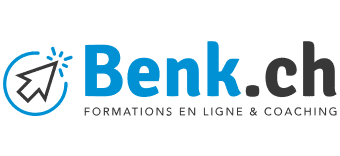Children HP
ADHD and educational tools: Different approaches to facilitate learning

ADHD , or Attention Deficit Disorder with or without Hyperactivity, represents a unique challenge in the field of education. Fortunately, a variety of pedagogical tools are available to support and facilitate learning for those affected. Find out in this article about the different approaches and pedagogical tools that can transform the educational experience of people with ADHD.
A reminder of ADHD and its impact on learning
ADHD is a neurodevelopmental disorder. Difficulty concentrating and paying attention, hyperactive or impulsive behavior characterize most cases. People with ADHD may have difficulty concentrating on tasks, staying organized, and managing their behavior consistently. They are easily distracted from their work and have difficulty following instructions or selecting important information. ADHD children find it hard to stay physically still. In short, ADHD can have a negative impact on the academic performance of students and poor professional performance in adults?
Innovative approaches to learning with ADHD
Learning for people with ADHD can be a challenge, but with the right teaching tools and strategies, it becomes not only possible, but rewarding. Here are 6 applicable approaches to better learning. The list is not exhaustive.
Using visual organizers and planners
Visual tools play a crucial role in managing ADHD. The use of planners, diaries and charts can help organize tasks and responsibilities. These visual tools help structure time and reduce organizational anxiety. Here are some visual planning tools that you can use with ease:
- Colorful wall calendars,
- Electronic calendars like Google Calendar,
- Trello application for viewing tasks and deadlines.
Using technological tools
The digital age has brought innovative solutions for ADHD. Specific applications for note-taking, task management and deadline reminders are extremely useful. These pedagogical and technological tools offer personalized, easily accessible support. You can use Evernote for note-taking or task management software like Todoist to organize ideas and assignments.
Establish time management strategies
Time management is often a challenge for people with ADHD. The Pomodoro method, for example, involves working for set periods (e.g. 25 minutes) followed by short breaks (5 minutes). This technique helps to maintain concentration and structure study sessions.
Create structured learning environments
A well-organized, calm learning environment is essential. Minimizing distractions and providing a dedicated study space can significantly improve concentration and learning efficiency in people with ADHD.
Use visual and kinaesthetic aids
Visual aids such as MindMeister mind maps and graphs are very beneficial. With kinesthetic approaches, you can use flashcards while moving around, or associate concepts with physical actions. These methods enable better retention of information and make learning easier for those who have difficulty with traditional methods.
Motivate with feedback and positive reinforcement
Positive feedback and reinforcement are fundamental to the education of people with ADHD. These approaches increase motivation, boost self-esteem and encourage perseverance.
ADHD children and educational tools: Benk’s approaches
At Benk, supporting children with ADHD in their educational development is a priority, with a particular focus on improving academic performance and self-confidence. Our certified coaches, attentive to the individual needs of each student, offer customized solutions covering all the required subjects. Our approach encompasses strengthening organization, concentration, self-confidence and preparation for working life.
We offer personalized online coaching, adapted to each student’s profile, to ensure structured and progressive learning. Thanks to personalized assessments and regular progress monitoring, we can guarantee the success of your academic and personal goals. This holistic method enables Benk ADHD students to develop their full potential, in school and beyond.
